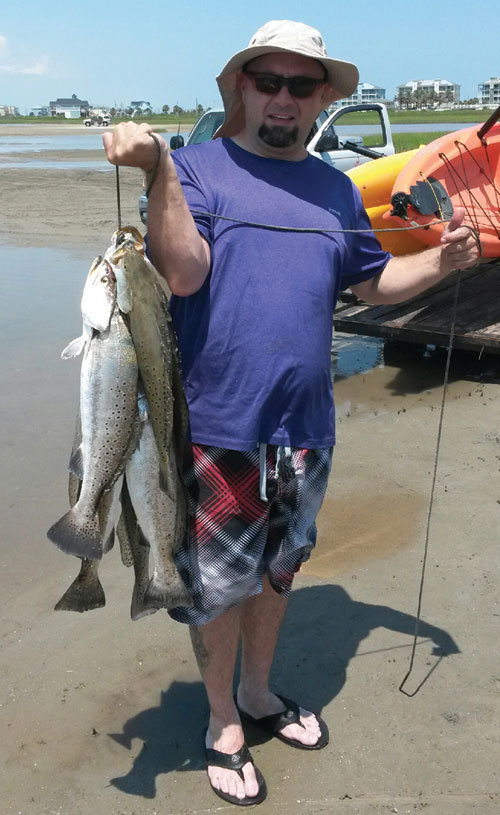Having grown up along the Texas coast and spending the majority of my life fishing I have had a life time to learn and understand certain things that directly impact the fishing specifically around the Galveston bay complex. There are two major factors which a lot of fishermen seem to either completely overlook or only partially take into account and those factors are Tidal movement and wind.
Most fishermen have a basic understanding of the tide and know fish in general head shallower and feed on a rising tide, and pull back out to deeper water as it falls.
While most fisherman know that a tide is basically the movement of the water and that there are high and low tides and many of them believe that this is a rise and fall of the water in a horizontal fashion but it is in fact a vertical movement which is controlled by the earth’s gravity and the sun and position of the moon. It is important to understand that the tide is not the same as the current which can be caused by several factors and there is a very detailed science to this which is too much for an article such as this so I will cover the essentials related to the Galveston Bay complex.

So onto the effects of tidal movement on fishing, the tide will force small fish and shrimp out of the back bays and marshes and the fish know this therefore when they feel certain changes they will go into a feeding mode. While both of the incoming and outgoing tides are good for fishing I prefer and outgoing tide for the best fishing.
Now let’s break this down, say that a fisherman has been watching the tide charts and trying to determine a point where the fishing will be best to fish a marsh drain or an opening to a small back bay and on the tide chart has identified a time when the water will begin to dump out at 7 a.m. and slack tide or the lowest point will be at 12:00 noon he knows that he needs for this area can hold fish when the water drains out because it’s very shallow and the tide chart shows that the drop will be 8-10 inches but once he gets there he realizes that the water has only dropped a few inches and the reason for this is he was only checking the tidal movement and not taking into account the current which like I said before can be caused by several factors the most important being the wind.
If he had also taken into account that the wind was blowing right out of the south and at 15-18 mph and had been for the past few days or so and as a result this had pushed massive amounts of water into the marshes and back bays, so in essence the wind was working against the tide and negated some of its movement so the current counter acted the tide.
Along the Galveston coast I have learned one important thing about the wind and that is the light southeast wind is the best wind we can get since it brings in clean water and makes the fish happy. Whereas a southwest wind is considered by most to be the worst wind possible for fishing, my grandpa would not even go if the wind was out of the east any direction.
A South wind can be ok for fishing depending if it’s leaning east or west and in our area the south wind has a tendency to lean to the west giving the same effect as a southwest wind.
South winds will counteract tides and sometimes cause the tide to be more than 12 inches above normal and in this situation you can use a tidal correction table to adjust for tide movement where you are planning to fish.
Once you break down the different elements to reading the tidal movement and the wind and you become more comfortable with understanding it you will in turn become more and more in tune with the areas that you fish.
Martin Felts | www.swbkfc.com | 832-774-5576

